The first Boeing 747, Prototype RA001 (N7470), was rolled out at Boeing’s Everett Plant, Washington State, USA on 30 September 1968 and made its maiden flight on 9 February 1969. A total of 1,574 747s had been produced when the final aircraft emerged from the production line on 6 December 2022. Over this 54-year period, the following six variants and various sub-variants have been produced.
747-100
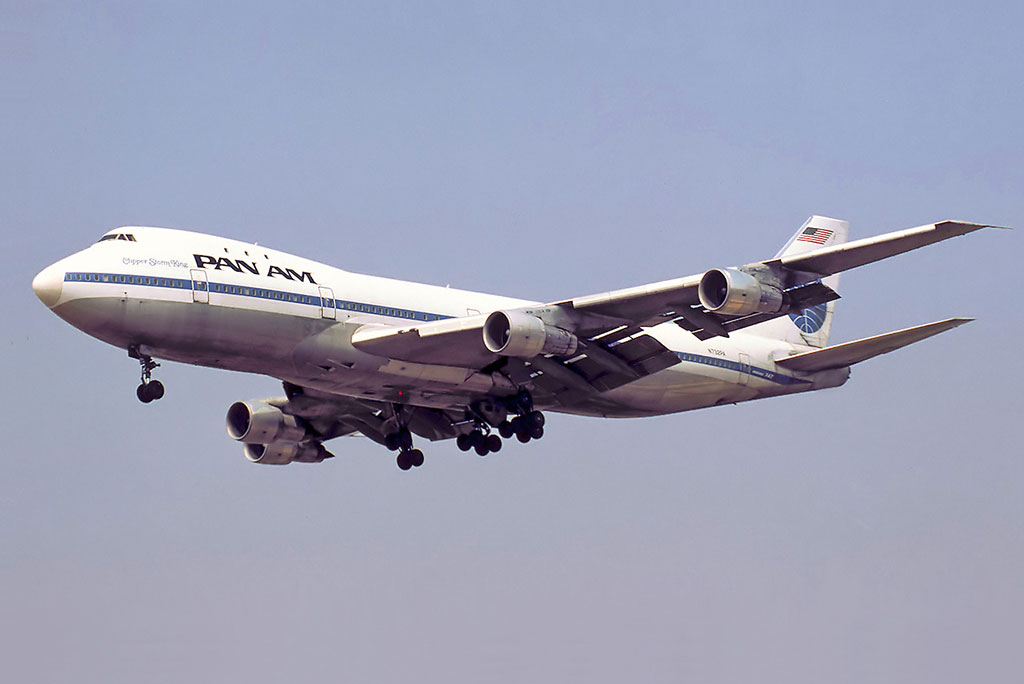
Boeing 747-121 (N732PA) of Pan Am. This aircraft has three windows on each side of the upper deck lobe. (Photo: By Aldo Bidini, distributed under a GFDL 1.2 Licence)
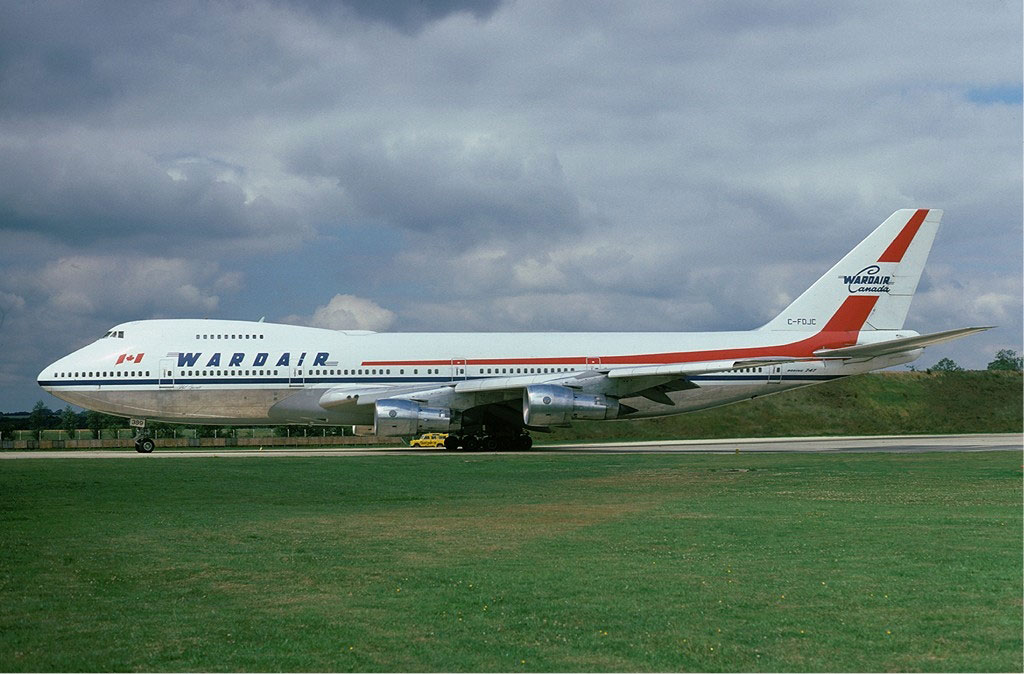
Boeing 747-100 (C-FDJC) of Wardair. This aircraft has ten windows on each side of the upper deck lobe. (Photo: Eduard Marmet, distributed under a CC BY-SA 3.0 Licence)
The first variant of the 747 was delivered to Pan Am on 15 January 1970 and completed the first scheduled passenger flight of a 747-100 on 22 January between New York and London Heathrow. The 747-100 was powered by four Pratt & Whitney JT9Ds. The earliest 747-100s had a short upper deck fuselage lobe behind the cockpit, with three windows on each side, which was used for a lounge area. In later -100 aircraft, the lounge area was replaced with premium class seating and Boeing offered an upper deck option with 10 windows on each side. The -100 variant could accommodate up to 366 passengers. In addition to the initial prototype, 167 747-100s were built. The main operators included Pan Am, American Airlines, Continental, Northwest Orient, United, National, Delta, TWA, Lufthansa, Air France, Alitalia, Iberia, BOAC, KLM, Air Canada, Japan Airlines and Aer Lingus. Although no specific freight version was developed, a number of aircraft were converted to freighters (747-100SF (Special Freighter)) following retirement from passenger operations.
747SR (Short Range) or 747D (Domestic)
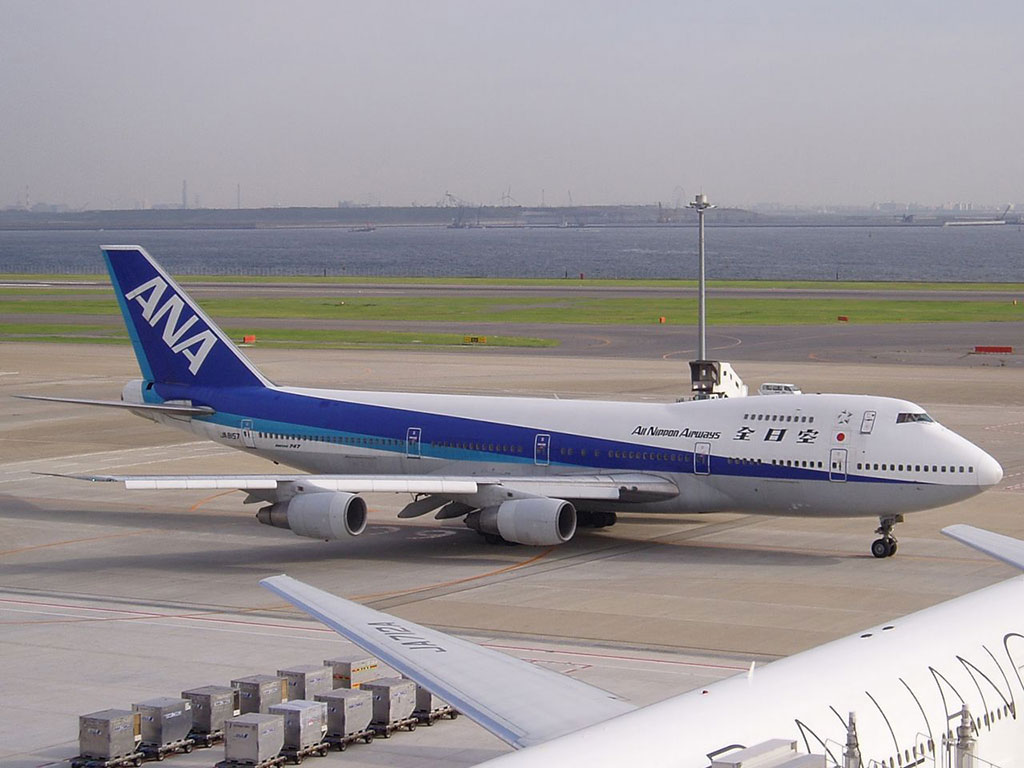
Boeing 747-100SR of All Nippon Airways at Tokyo International Airport (Photo: Cassiopeia sweet)
This short-range version of the 747-100 was developed in response to requests from Japanese airlines for a high capacity aircraft for use on domestic routes between major cities. It had a lower fuel capacity, increased payload and could carry between 455 and 550 passengers in an economy class seating configuration. Modifications and structural reinforcements were made to the fuselage, wings and undercarriage to deal with the additional stress from an increased number of take-offs and landings. The 747SR was powered by de-rated Pratt & WhitneyJT9D engines. Only 29 747SRs were built, with Japan Airlines (JAL) being the sole operator. The type entered service in October 1973 and remained in service until 2006. Several sub-variants of the 747SR were developed: twenty -100BSRs were produced for ANA and JAL featuring an increased take-off weight capability. The -100BSR SUD (Stretched Upper Deck) model had an extended upper deck to accommodate up to 563 passengers. Only two aircraft of this type were produced for JAL.
747-100B
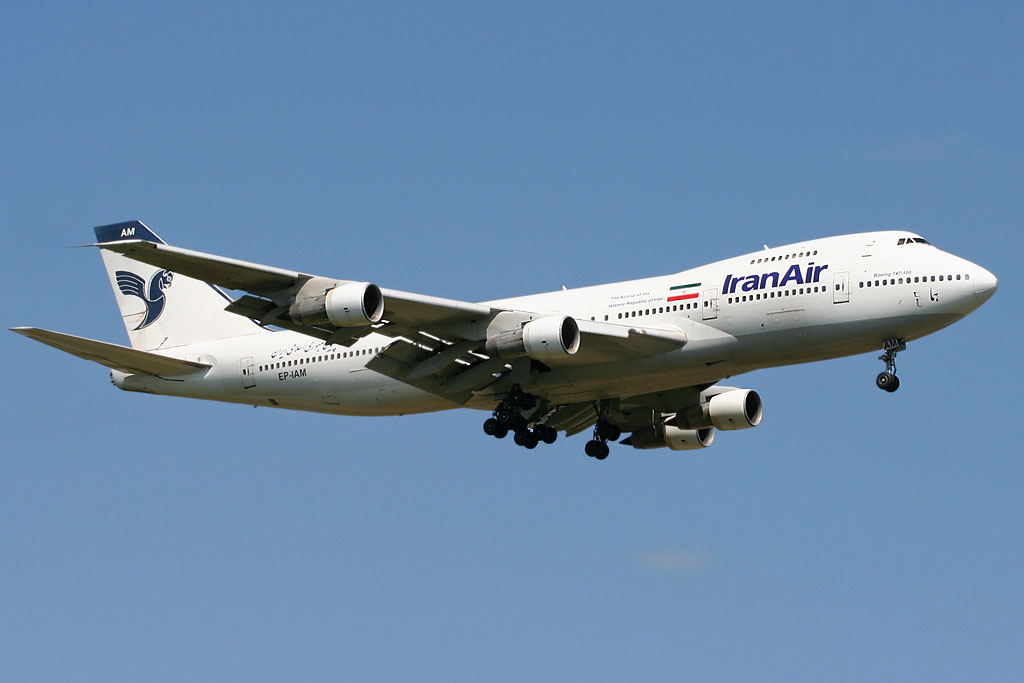
Boeing 747-100B (EP-IAM) of Iran Air on approach to London Heathrow, May 2009. (Photo: Mike P, distributed under a CC BY-SA 2.0 Licence)
This variant was developed from the 747-100SR and featured a reinforced airframe and landing gear. It could carry up to 452 passengers and had an increased maximum take-off weight of 750,000lb (340 tonnes). A higher fuel capacity led to an increased range of 5,000nm (9, 300km). Three engines types were available: a modified Pratt & Whitney JT9D, General Electric CF6-50 or Rolls-Royce RB211-254. Nine 747-100Bs were produced, with Saudia receiving eight aircraft and Iran Air the remaining one.
747SP (Special Performance)
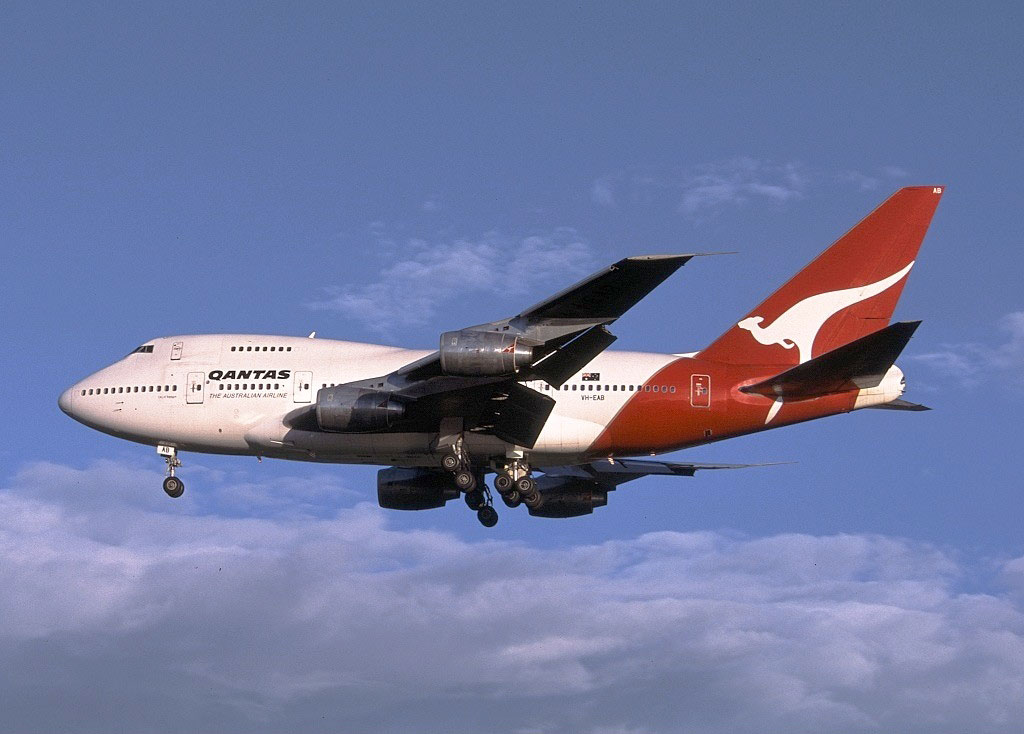
Boeing 747SP (VH-EAB) of Qantas, July 2001 (Photo: Sunil Gupta, distributed under a GFDL 1.2 Licence)
The development of the 747SP variant was associated with a request from Pan Am and Iran Air for a high capacity, wide-body aircraft with a long range capability. The 747SP is 47ft 1in (14.36m) shorter than the 747-200 and has an extended vertical stabiliser (by 5ft / 1.52m) and extended horizontal stabilisers (by 10ft / 3m). The 747SP was primarily based on the 747-100 but received the engines of the 747-200 (Pratt & Whitney JT9D-7 or Rolls-Royce RB211-524). Its lower weight meant that it could achieve the same flight performance as the 747-200 but with lower fuel consumption, plus it could operate from shorter runways. The maiden flight of the 747SP was in July 1975 and it entered service in April 1976, operating Pan Am’s Los Angeles to Tokyo service. 45 747SPs were built, with operators including Iran Air, Qantas, Saudia, Syrianair, China Airlines of Taiwan, Braniff, Air China, Korean Air, Royal Air Maroc and TWA. A small number of SPs remain in service, mainly as VIP transport aircraft for various Middle-East governments.
747-200
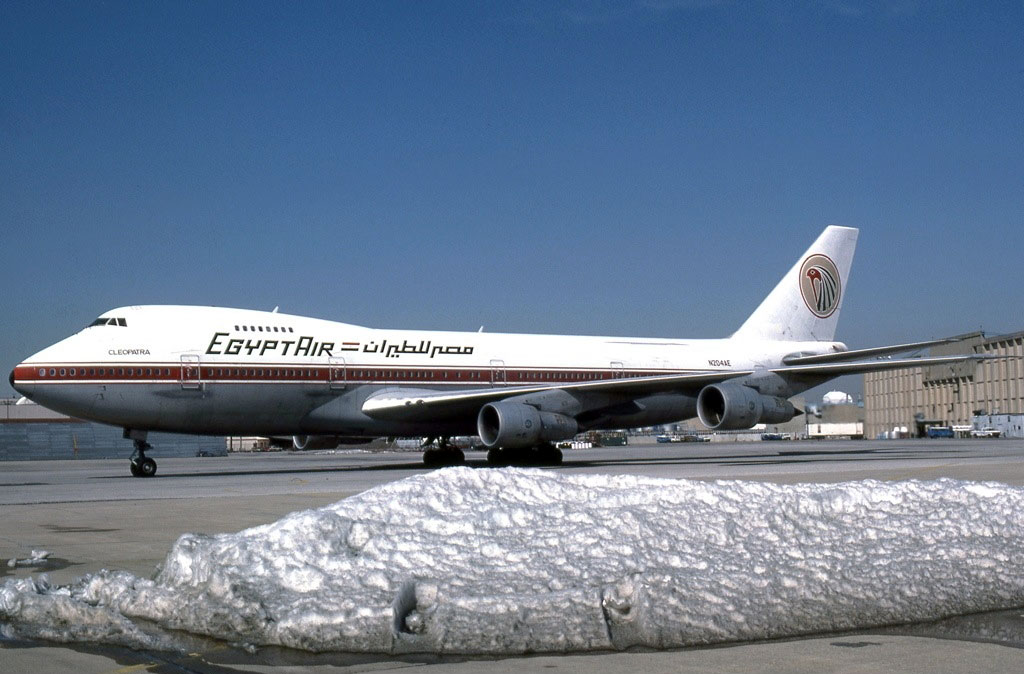
Boeing 747-200M (N204AE) of EgyptAir. (Photo: Jon Proctor, distributed under a GFDL 1.2 Licence)
This variant was developed in response to a demand for an aircraft with increased payload and greater fuel capacity leading to a longer range than the 747-100. The heavier 747-200 was produced in passenger (-200B), freighter (-200F), convertible (-200C) and combi (-200M) versions. Improvements included structural enhancements and a reinforced landing gear. Initially the -200 was powered by Pratt & Whitney JT9D-7 engines with the General Electric CF6-50 and Rolls-Royce RB211 series subsequently added as options. Although the earliest -200Bs were fitted with three windows on each side of the upper deck, most aircraft had an extended upper deck (by 6ft / 1.9m to 26ft / 7.62m) with ten windows on each side and could accommodate 16 passengers in a business class cabin. The range with a full passenger load of up to 539 passengers was initially over 5,000nm (9,300km) but eventually increased to 6,860nm (12,700km) following the introduction of more fuel-efficient engines. The 747-200B first entered into service with KLM in February 1971 and went on to operate for a wide range of airlines globally. The 747-200F had a hinged nose cargo door together with an optional side cargo door (747-200F (SCD)) and could carry up to 105 tons (95.3 tonnes) of cargo. The -200F entered service with Lufthansa in April 1972. The 747-200C convertible version could be operated as passenger- or freight-only aircraft or as a combination of both. The combi aircraft (747-200M) could carry up to 238 passengers in a three-class seating configuration separated from a cargo area at the rear of the main deck, which was accessed through a side cargo door. Boeing produced 393 747-200 variants including 225 passenger -200Bs, 73 -200F freighters, 79 -200M combis, 13 -200C convertibles and 4 military/government aircraft. Most of these aircraft have now been retired although a small number still exist as freighters.
747-300
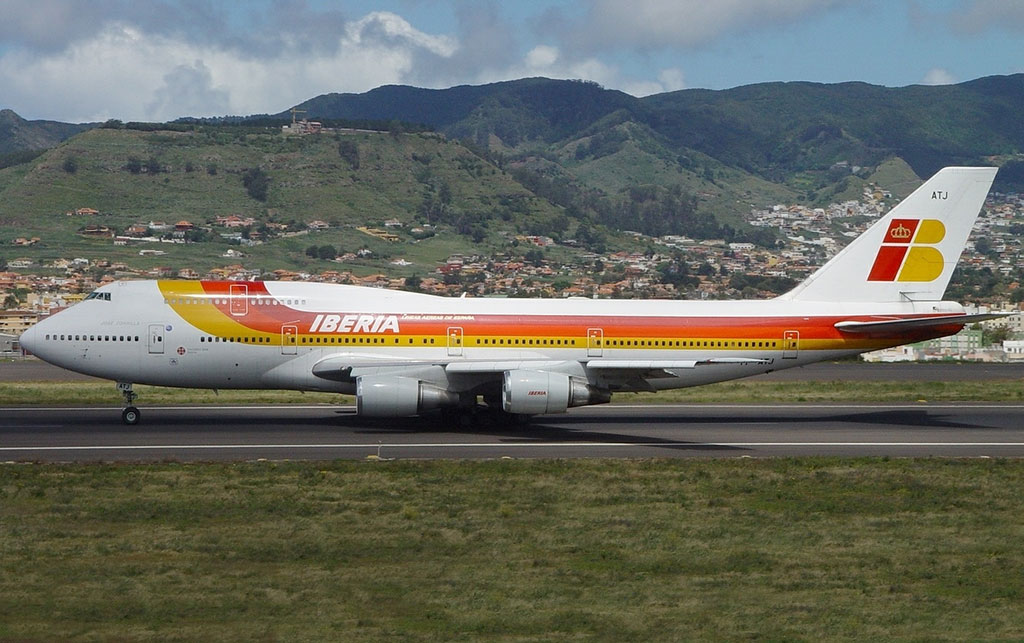
Boeing 747-300 (EC-ATJ) of Iberia. (Photo: By Francisco José Jurado Ariza, distributed under a CC BY-SA 3.0 Licence)
Compared to the -200 variant, the 747-300 is characterised by a 23ft 4in (7.11m) longer upper deck lobe and two additional emergency exits. The stretching of the upper deck, including some minor aerodynamic changes, contributed to an improvement in the performance of this variant, including a cruise speed of Mach 0.85 compared with Mach 0.84 of the -100 and -200 variants at the same take-off weight. The -300 used the same Pratt & Whitney or Rolls-Royce engines as the 747-200 or an upgraded General Electric CF6-80 engine which, when combined with the improved aerodynamics, led to a reduction in fuel consumption of up to 25% in comparison with the earlier 747 variants. The 747-300 replaced the spiral staircase used on the -100 and -200 variants with a straight stairway to the upper deck. Swissair was the launch customer for the 747-300, receiving its first aircraft in March 1983. In addition to the passenger version, combi (747-400M) and short-range (747-300SR) versions were also produced. A freighter version was not built, although conversion of 747-300 passenger aircraft to freighter (747-300BCF; Boeing Converted Freighter) began in 2000. A total of 81 747-300s were built including 21 -300M and 4 -300SR versions. The main operators of the -300 included Swissair, KLM, Qantas, Sabena, Air France, Egypt Air, PIA and JAL (including all the -300SR versions).
747-400
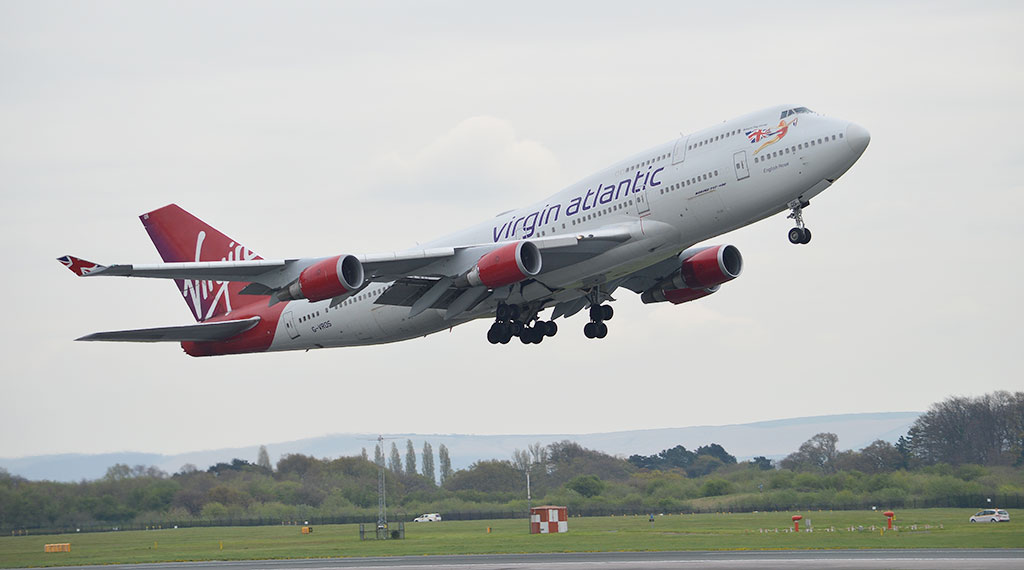
Boeing 747-400 (G-VROS) of Virgin Atlantic, departing Manchester Airport in April 2017. (Photo: Nigel Richardson)
The 747-400 is a significantly upgraded and enhanced variant. It retains the stretched upper deck lobe of the -300 but has redesigned, longer wings (wingspan increased by 15ft 9in / 4.8m) with winglets of 6ft (1.8m) which contribute to a 2-4% improvement in fuel efficiency. The -400 also features additional fuel tanks in the horizontal stabilizer which increases the range, larger wheels, more effective and lighter carbon wheel brakes and improved engines, with a choice of Pratt & Whitney PW4000, General Electric CF6-80 or the Rolls-Royce RB211-524. Internally the most significant change is in the flight deck, with the introduction of a new two-person digital, glass cockpit and corresponding reduction in the number of dials, gauges, switches and knobs from 971 to 365. Six versions of the 747-400 were originally offered: passenger (-400), freighter (-400F), combi (-400M), short-haul domestic (-400D), extended range passenger (-400ER) and extended range freighter (-400ERF). The freighter does not have an extended upper deck. The passenger -400 was the first version to enter service, beginning operations with Northwest Airlines in February 1989. Major operators of the 747-400 include Singapore Airlines, United Airlines, Lufthansa, British Airways, JAL, Qantas and Air France. In November 2002, in collaboration with Cathay Pacific, Boeing launched the 747-400 Special Freighter programme, which modified passenger -400s for cargo use, producing the 747-400BCF (Boeing Converted Freighter). The first aircraft from the programme was delivered to Cathay Pacific in December 2005. A total of 694 747-400 series aircraft were produced.
747-8
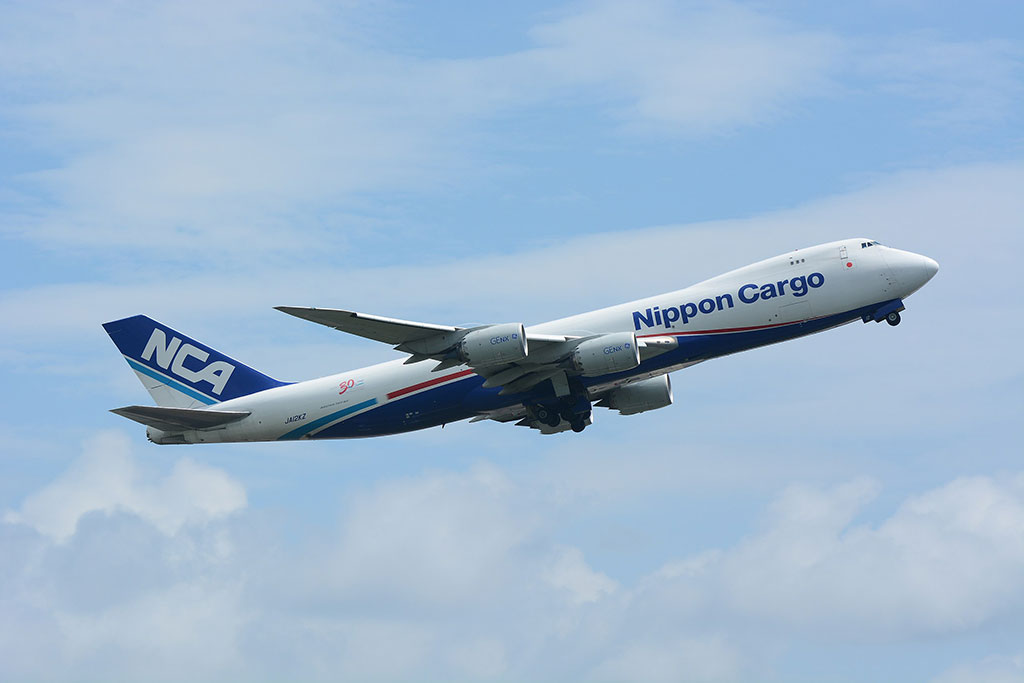
Boeing 747-8F (JA12KZ) of Nippon Cargo, August 2015. (Photo: Masakatsu Ukon, distributed under a CC BY-SA 2.0 Licence)
The 747-8, launched in November 2005, features new developments in technology and aerodynamics derived from the Boeing 787 Dreamliner. There are two variants: the passenger 747-8I (Intercontinental) and the 747-8F (Freighter). The 747-8 features a fuselage stretch of 18ft 4in (5.6m). The redesigned wing is larger (wingspan: 224ft 5in / 68.4m), wider, thicker and deeper, providing an increase in fuel capacity. The wing includes single-slotted (rather than double-slotted) outboard flaps and double-slotted (rather than triple-slotted) inboard flaps to improve low-speed performance and contribute to noise reduction. The winglets of the 747-400 are replaced by raked wingtips to improve fuel efficiency. The -8 is the first 747 variant to include a partial fly-by-wire system which is used to control the spoilers and outboard ailerons. The aircraft is powered by four General Electric GEnx-2B67 high-bypass turbofan engines featuring chevron-shaped trailing edges on the engine nacelle exhaust and turbine casing to reduce engine noise. The flight deck is significantly upgraded with new technologies while maintaining commonality with the 747-400. The cabin interior of the 747-8I, with its curved upswept style to create a sense of space, and soothing lighting, can accommodate up to 467 passengers in a three-class seating configuration. The 747-8I can operate over arrange of 7,730nm (14, 320km) and the aerodynamic refinements, new wing and new engine type mean that the -8I is 16% more fuel efficient and has a 13% lower seat-mile costs compared to the -400. The 747-8F has a total cargo capacity of 857.7 cubic metres, a maximum structural payload capability of 139.5t (307,600lb) and a range of 4,325nm. A total of 155 747-8s have been produced. The only commercial airlines currently operating the 747-8I are Lufthansa, Korean Air and Air China. More 747-8Fs have been sold by Boeing, with current operators including Atlas Air, Cargolux, UPS, Nippon Cargo and Cathay Pacific.
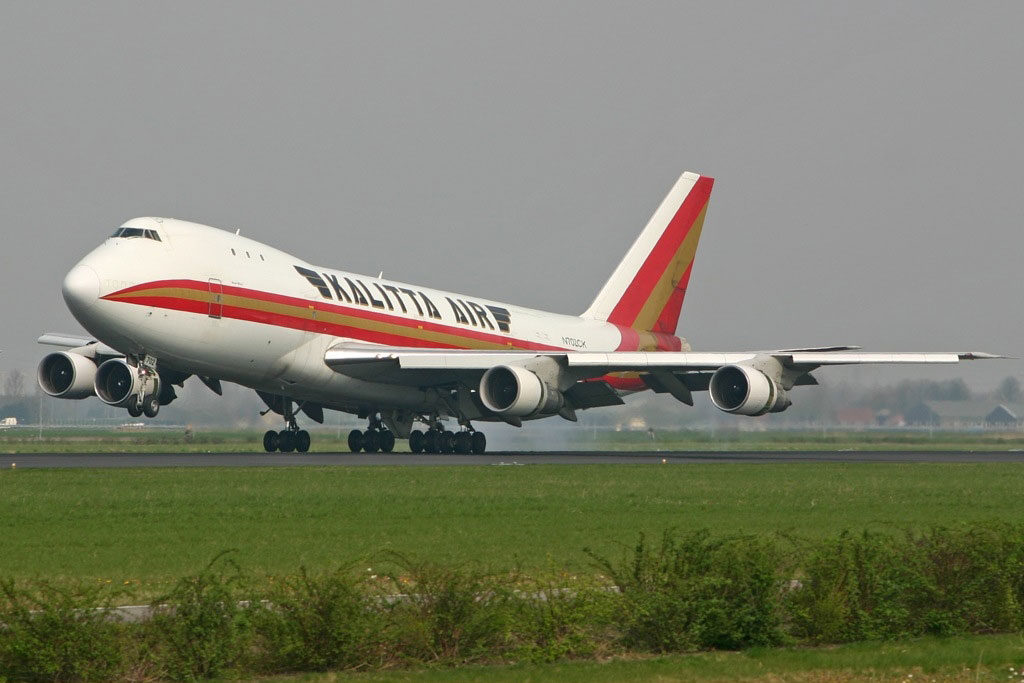
Boeing 747-146(SF) (N702CK) of Kalitta Air at Amsterdam, April 2006. (Photo: Peter Bakema, distributed under a GFDL 1.2 Licence)
Boeing 747 Specifications
| 747-100 | 747SP | 747-200B | 747-300 | 747-400 | 747-8I | |
| Length | 231ft 10in (70.66m) | 184ft 9in (56.3m) | 231ft 10in (70.66m) | 231ft 10in (70.66m) | 231ft 10in (70.66m) | 250ft 2in (76.25m) |
| Wingspan | 195ft 8in (59.6m) | 195ft 8in (59.6m) | 195ft 8in (59.6m) | 195ft 8in (59.6m) | 211ft 5in (64.44m) | 224ft 5in (68.4m) |
| Wing area | 5,500 ft2 (511 m2) | 5,500 ft2 (511 m2) | 5,500 ft2 (511 m2) | 5,500 ft2 (511 m2) | 5,650 ft2 (525 m2) | 5,960 ft2 (554 m2) |
| Tail height | 63ft 5in (19.3m) | 65ft 5in (19.9m) | 63ft 5in (19.3m) | 63ft 5in (19.3m) | 63ft 8in (19.4m) | 63ft 6in (19.4m) |
| Max take-off Weight (MTOW) | 735,000lb (333,000kg) | 700,000lb (320,000kg) | 833,000lb (378,000kg) | 833,000lb (378,000kg) | 910,000lb (412,760kg) | 987,000lb (447.696kg) |
| Cruise speed | 490kts (907km/h) | 505kts (935km/h) | 490kts (907km/h) | 523kts (969km/h) | 504kts (933km/h) | 504kts (933km/h) |
| Range | 4,620nm (8,560km) | 5,830nm (10,800km) | 6,860nm (12,700km) | 6,330nm (11,720km) | 7,670nm (14,200km) | 7,730nm (14,320km) |
| Engine (x4) | JT9D | JT9D, RB211 | JT9D, CF6, RB211 | JT9D, CF6, RB211 | PW4000, CF6, RB211 | GEnx-2B67 |
| Flight Crew | Three | Three | Three | Three | Two | Two |
| Typical seating | 366 | 276 | 366 | 400 | 416 | 467 |
| Cargo | 6,190 ft3 (175 m3) | 3,900 ft3 (110 m3) | 6,190 ft3 (175 m3) | 6,190 ft3 (175 m3) | 5,655 ft3 (160.1 m3) | 6,345 ft3 (179.7 m3) |
A number of special, modified variants of the 747 have been produced and they are described in detail here: https://www.airportspotting.com/the-modified-boeing-747s/
How many variants have you flown on? Leave a comment below!
Flying Firsts
Discover more about the history of the Boeing 747, its variants, and important dates, facts and statistics in our airliner reference guide book – Flying Firsts.






2 comments
[…] A Guide to Boeing 747 Variants […]
Nice article! But not all 747-400 have winglets. FYI